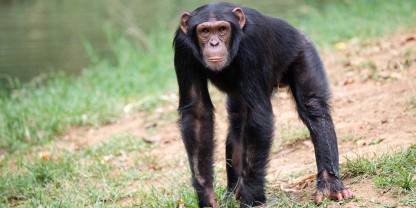Gazetted in 2015, Gishwati-Mukura National Park is Rwanda’s newest national park. It consists of the Gishwati and Mukura Forests, which are about 50km/30mi apart. The area between them has been set aside for reforestation. At this point, only the Gishwati sector, an exciting new destination, is developed for tourism.

-
Best Time To Go
- June to September (It is drier and trails are easier to hike)
-
High Season
- June to September (It doesn’t get busy)
-
Size
-
35km² / 14mi²
(Gishwati 15km² / 6mi², Mukura 20km² / 8mi²) -
Altitude
-
2,061-2,619m /6,762-8,593ft
 View Photos
View Photos
 View Photos
+19
Photos
View Photos
+19
Photos
Pros & Cons
- Semi-habituated chimps can be seen on forest hikes
- Good birding with several Albertine Rift endemics
- Simple but well-run guesthouse with stunning views
- New off-the-beaten-track destination
- Well-maintained trails and beautiful waterfall
- Cultural exchanges with neighboring communities
- Chimps and monkeys are less habituated than in more established places
- Only a two-room guesthouse and camping available
- No day visitors allowed
Wildlife
The main attraction of Gishwati Forest is a community of chimpanzees. As they are only semi-habituated, seeing these charismatic primates shouldn’t be taken for granted. Although you might come across them while hiking, your best chance of a quality encounter is to head out to their nests before dawn. Watching them wake up, interact and start their daily activities is very special, and so are their loud vocalizations when they spot you.
More about Gishwati-Mukura’s wildlifeScenery
From the guesthouse with its endless views over layers of rolling hills, a well-maintained trail crosses a tea plantation before disappearing into a beautiful secondary forest. The trail follows a lush river valley before coming to a stop at a picturesque waterfall. In 2002 the area was nearly depleted due to illegal mining and farming. Since then, big forestation efforts have accelerated the restoration of the Gishwati and Mukura Forests, which protect 60 species of tree including many hardwoods and bamboo.
Activities
The main activity is guided forest walks through the Gishwati sector. These come with a good chance of encountering semi-habituated chimps, as well as golden monkey and l’Hoest’s monkey, and a variety of forest birds including several Albertine Rift endemics. The guided walks are only available to people staying at Gishwati’s community-owned guesthouse. No organized activities are available at the Mukura sector, but the forest here is rated highly by bird-watchers.
Weather & Climate
Gishwati-Mukura experiences a cool climate. It can rain at any time, but June to September is relatively dry with great hiking conditions. Due to the proximity to the equator, temperatures don’t change much through the seasons – daytime temperatures are usually about 19°C/66°F.
More about the weather and climateBest Time To Visit
Gishwati-Mukura can be visited throughout the year, but the dry months from June to September are the best for hiking and chimp trekking. Whenever you visit, warm, waterproof clothing and hiking shoes are essential.
More about the best time to visit
